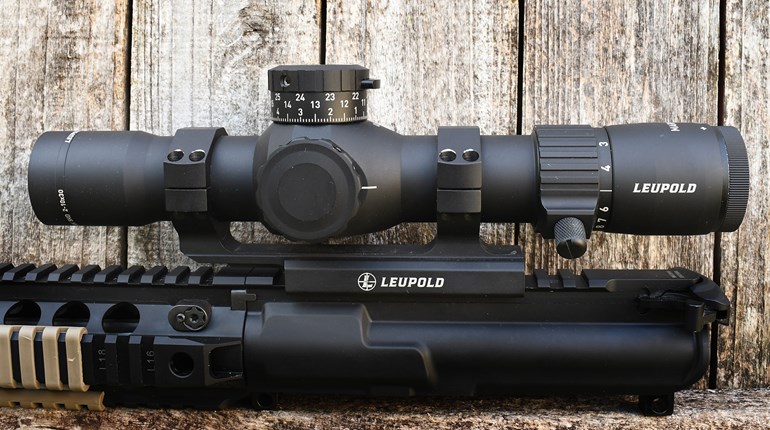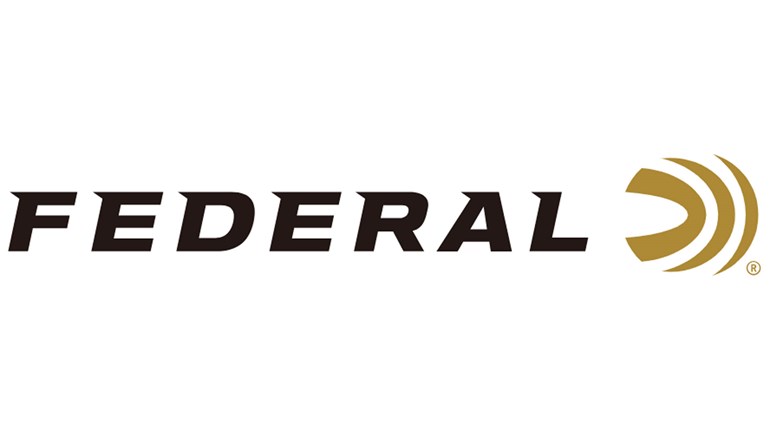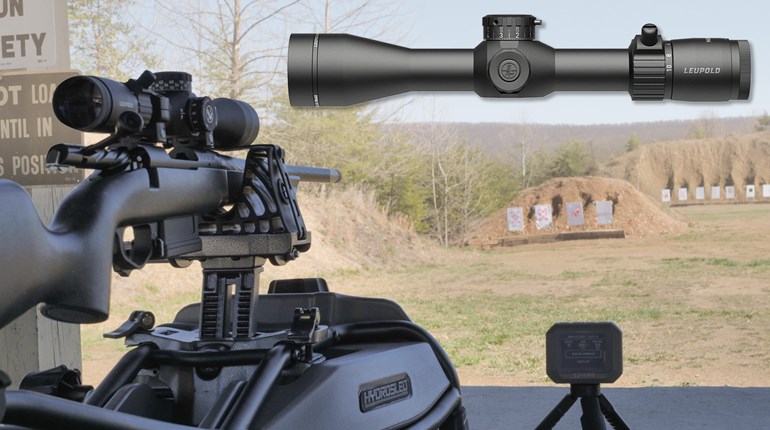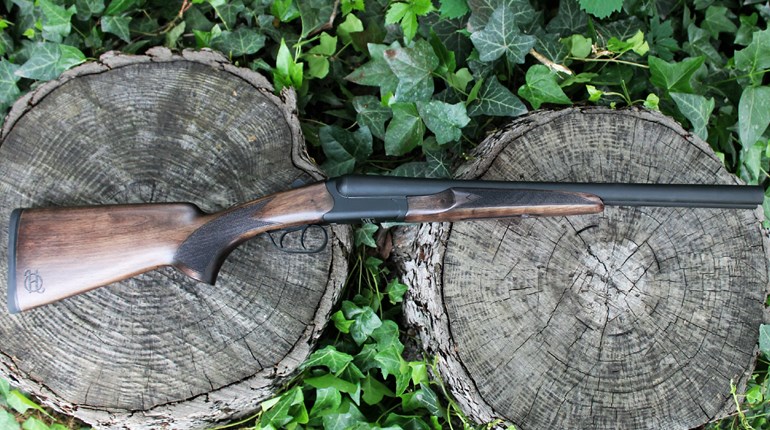
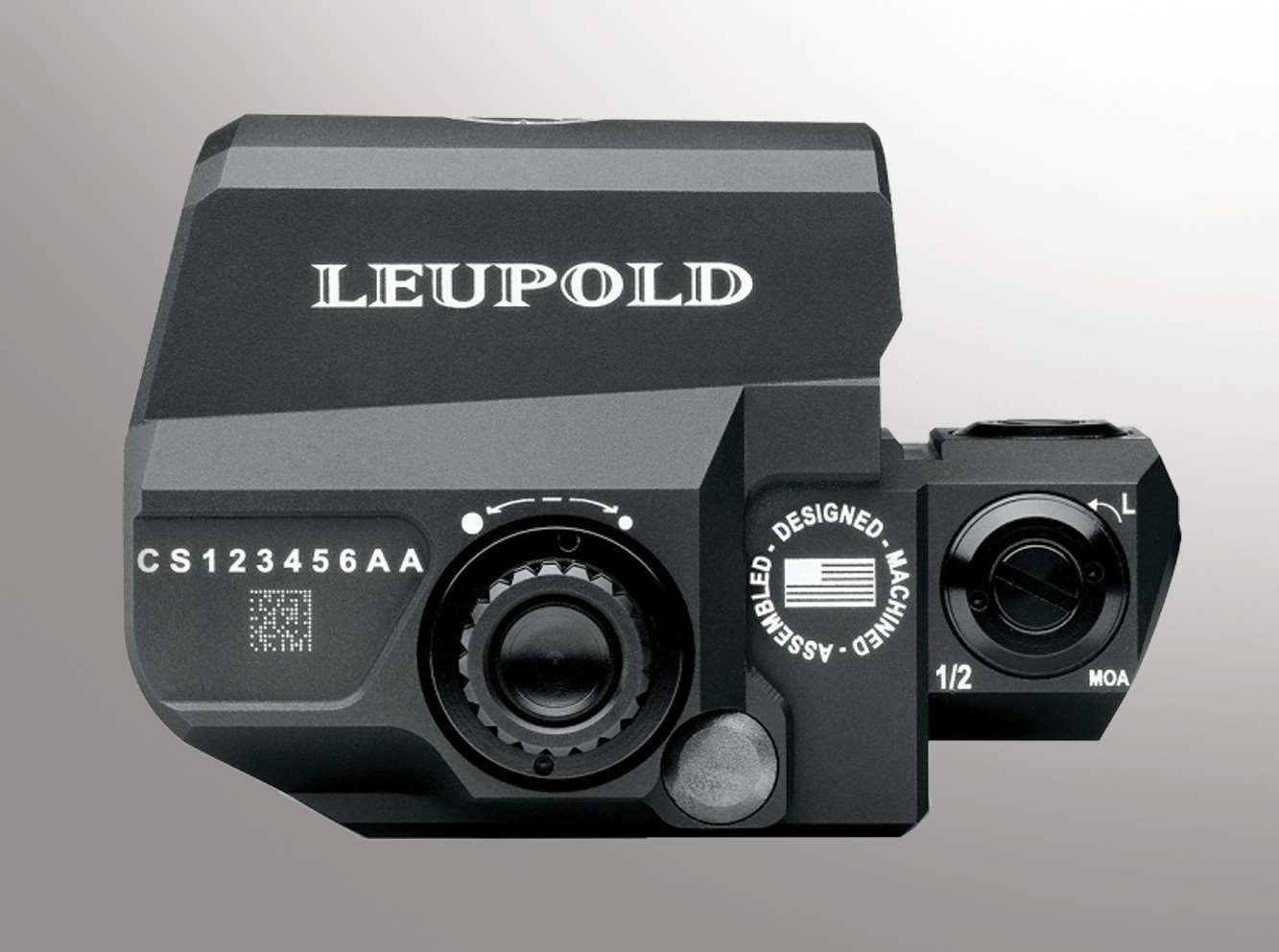
Leupold Carbine Optic
If there is anything subtle about the Leupold Carbine Optic (LCO), we’re going to need a little help figuring out what it is. We offer that with no conscious intention of being snarky, either: We’d accept the proposition that the subdued-but-classy Gold Ring marque of yesteryear is too subtle in a red-dot here, reflex-there world. The folks in Beaverton, Ore., can therefore be pardoned for a somewhat more bumptious everything on this seriously upscale sight. The risk, naturally, is failing to deliver as such a fanfare fades.
Well, forget about that. We’d write our name in big letters, too, on the side of anything we’d done as well as the LCO.
The basics are typically sound Leupold & Stevens. The intricately machined aluminum body has dot source electronics plugged neatly and all-but-immovably into the rear, with legibly labeled, .5-minute elevation and windage adjustments readily accessible (the stops/clicks are particularly positive). Integrated seamlessly above and slightly forward are the optics where the aiming cue—the dot—appears. They’re not tubular like most competitors, but perceptually larger and roughly rectangular: The sides and top all but disappear from the shooter’s perspective.
Forward is a transverse battery compartment for a CR123A that delivers up to 5 years of illumination. Appropriately knurled for easy hand-tightening, the cover eschews the too-fine thread pitch we sometimes encounter (and eventually bugger up no matter how careful we are) and employs an O-ring to take up any slack on watertightness. An ample slot is available for tightening the cover, too, but we saw no need to do so.
Amidships, so to speak, are two attributes we especially like. Starboard (right, you ‘lubbers) is the clamp side of the Picatinny, with nearly two inches to grab the rail of your carbine against the machined-in, fixed port side. While the half-inch nut is slotted, this ought to be for emergencies only; use a proper wrench or driver. Port side is our present favorite on/off and intensity control—a central button for the former and a continuous rotary switch for 16 settings of the latter, and no special mode/adjustment needed for NV/G use. In other words, there’s nothing to read in terms of setting brightness—rotate forward for more, back toward you for less. A helpful flare signals when maximum dot brightness is achieved.
The 1x LCO uses a 1 MOA dot, which, at first thought, might seem small. We’d argue instead that this is a clever bit of business. First, the optic is plenty bright in relatively raging (~38° N), cloudless August noon sunlight, so that target obscuration out to 400 yards remains very small, yet the aiming cue remains crystal clear. Second, the small dot presents a noticeably smaller asymmetric flare if you’re forced to shoot without your vision correction. (Recall that red dot/reflex sights should be used with your distance correction in play. High-precision dots like that in the LCO clean up to impressive symmetry when you do.) But in the absence of that correction, a smaller dot “smears” less, and somewhat counterintuitively keeps you on target better as distance grows.
We shot the LCO on a pistol-caliber carbine in a local Steel Challenge half match, and found it fast enough on those types of shots (to 35 yards) to edge out all comers, even fast-swinging and similarly sighted rimfires. We think it has a lot to do with the extraordinarily wide field of view the Leupold provides, the smaller dot notwithstanding.
Strange as it may seem, we nearly missed what is now our favorite feature of the LCO. One of the big advantages of reflex-type sights in general is their forgiving head position requirement: The aiming cue does not have to be carefully centered relative to optic “boundaries” and the target like traditional reticles do. If the dot is on your target—no matter where it appears in the field of view—initiate. What we believe the LCO elevates beyond its peers, however rough or fine that class, is the degree to which this is true when we were behind the Leupold. In our testing, we could intentionally miss our cheek weld by a good margin, yet still find that dot obligingly on, and shots hitting, our target.
For the average shooter, this is of modest consequence. Shooting with four points of contact—both hands, shoulder and cheek—is vastly more comfortable and precise, and there’s little reason to diverge from this time-honored and thoroughly vetted component of rifle craft. But where serious speed is required, and most especially for the rifleman or -woman on a “two-way” range, this facility may quite literally be a life-saving advantage.
There are lots of ways to skin the carbine optic/reflex cat, but as we said at the outset, the unsubtle excellence of an LCO means you’ll need to do it only once.
Visit Leupold & Stevens at www.leupold.com
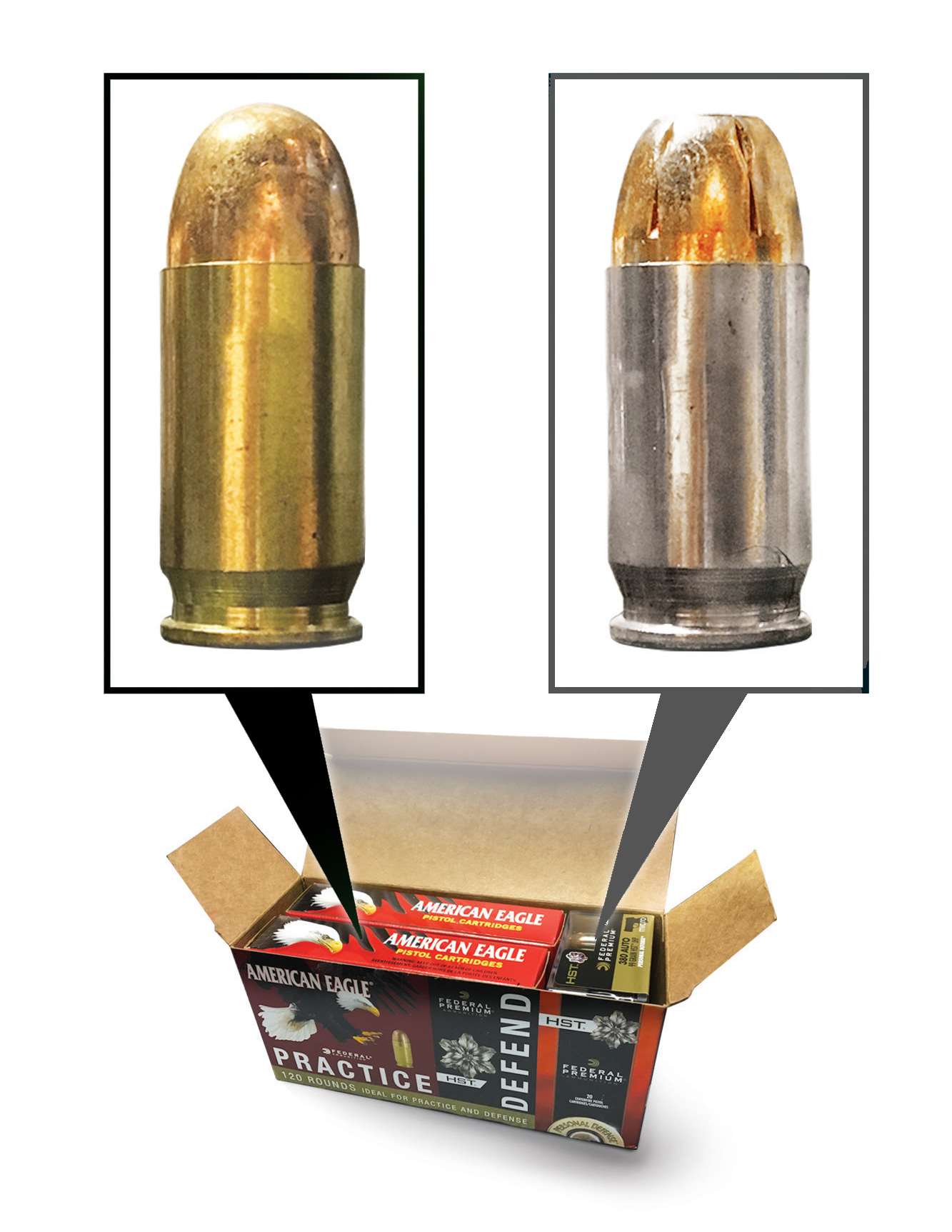
Federal/American Eagle Practice and Defend—.380 ACP
No too many weeks ago, we spent a “First Gear” on Federal/American Eagle Practice and Defend Combo Packs. Our view is that these solve a potentially thorny and long-standing problem—the relatively wide variations that quite commonly appear between “training” and “defensive” loadings, even when used in the same firearm. In .45 ACP, .40 S&W and 9 mm, the Combo Packs put 100 training (American Eagle FMJ) and 20 closely matched defensive rounds (Federal “HST” JHP) together, and can improve—sometimes dramatically—the correlation between training and defensive performance.
In the first three calibers we considered, modern bullet designs and power levels make any of them sound defensive choices, and our tests showed all three live up to their combo billing. Even when numerical data demonstrated some variations in the crucial velocity parameter, different powders and charge weights were used to restore all but minor variations in recoil impulse and point of impact. As we said then, we now reiterate—job very well done.
The forth Combo caliber is rather a different story. .380 ACP has been around a good long time (1908), but has suffered from a deservedly checkered reputation as a fight-stopper. The .380 today is similar to what it was back then: Compact semi-automatics were widely sought-after, and .380 was the most powerful cartridge that could be accommodated by the mainly blowback designs for the best part of a century.
To say that has changed a lot in more recent times is an understatement. Top manufacturers, beginning with Colt (.380 Government, in 1984) and more recently followed by the likes of Glock (G42), SIG (P238), Smith & Wesson (Bodyguard .380), Kimber (Micro .380), Ruger (LCP) bringing all the benefits of locked breech design to pistols in the caliber. A deserved rebirth, if not an arguable explosion, has followed.
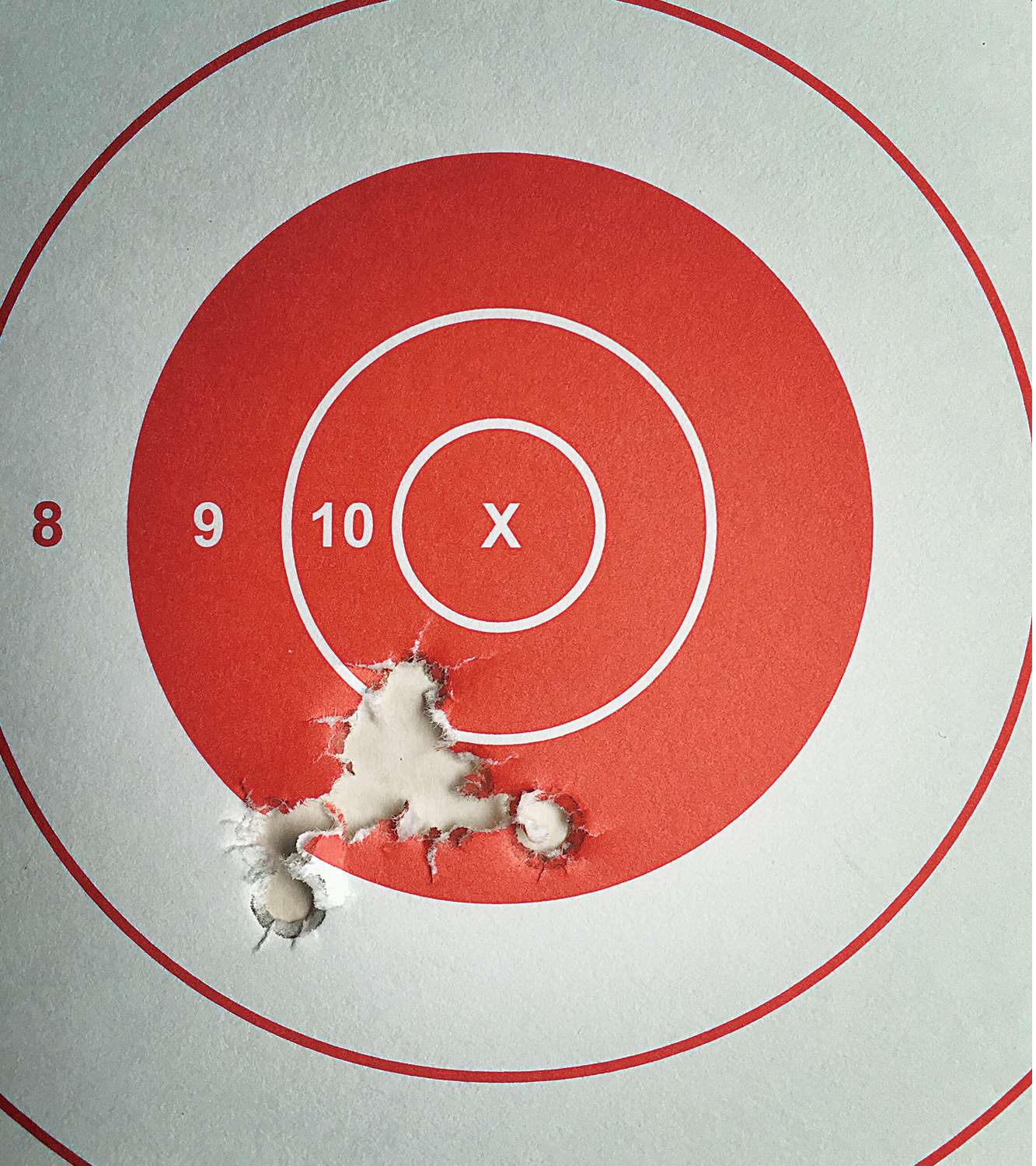
But as the decidedly junior partner in the semi-automatic, defensive handgun quartet, the Combo Pack philosophy is perhaps most important for the .380. There should be no mystery as to why: Since the smaller ACP cartridge has the least power—only 52 percent of the Combo Pack 9 mm HST, for instance—it’s perhaps most important that practice in its use eliminate as many variables as possible. Consistency brings proficiency.
When it comes to the numbers, the .380 pairings showed the greatest variation (not quite 12 percent) of the four. For reference, compare the 22 ft/lbs difference in .380 ACP to the 38 ft/lbs absolute difference we found in 9 mm (a little over 10 percent). When fired from a magazine in randomized order, we found we could juuuuuust tell the difference, whereas the 9 mm offset was relatively plain.
Put another way, the Combo Pack philosophy, therefore, proves just as sound for the .380 as it did for 9 mm, .40 S&W and .45 ACP. In terms of recoil and shot placement, the .380—even in more demanding smaller test guns—gave outstanding results. If our photo of a single, ragged hole doesn’t convince you, it’s hard to see what would.
Well done again, Federal.
Visit Federal/American Eagle at www.federalpremium.com











